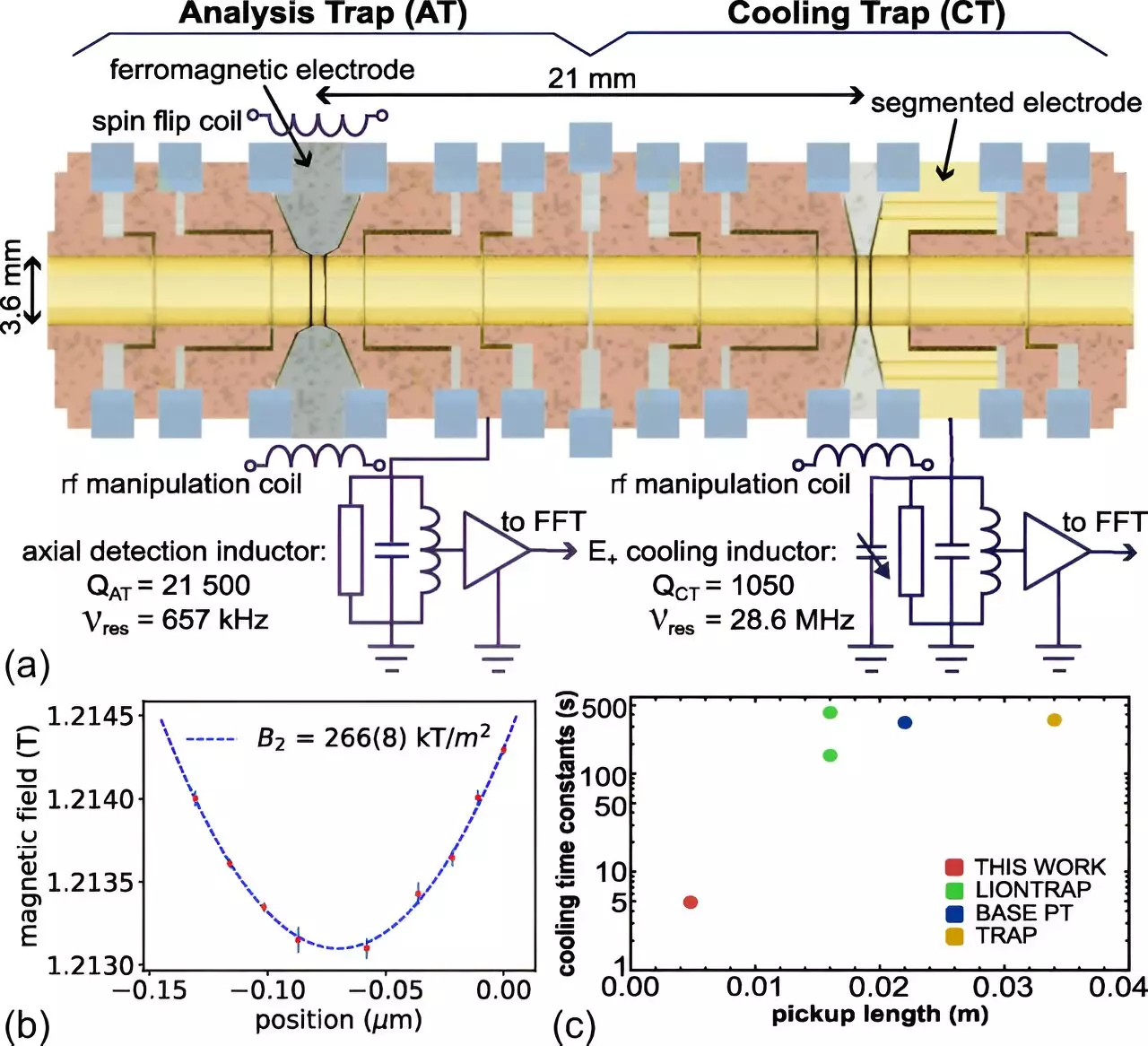The question of why the universe contains matter but virtually no antimatter has puzzled scientists for decades. In a groundbreaking development, the BASE international research collaboration at CERN has made significant progress in understanding this fundamental asymmetry. Led by Professor Dr. Stefan Ulmer from Heinrich Heine University Düsseldorf, the team has devised an innovative experimental approach to measure the mass and magnetic moment of antiprotons with unprecedented precision. This achievement could shed light on the elusive matter-antimatter imbalance that defies the conventional laws of particle physics.
According to the standard model of particle physics, the Big Bang gave rise to equal amounts of matter and antimatter. When these particles collide, they annihilate each other, leaving behind pure energy. This process should theoretically result in a universe devoid of matter. However, the existence of material objects indicates a slight excess of matter over antimatter, challenging the foundations of particle physics. Scientists have been striving to reconcile this inconsistency by expanding the standard model and conducting precise measurements of key physical parameters.
The BASE collaboration, short for “Baryon Antibaryon Symmetry Experiment,” comprises a consortium of universities and research institutions across Europe and Japan. Their primary goal is to investigate whether matter particles and their antimatter counterparts exhibit identical properties, such as mass and magnetic moments. By analyzing the spin-flip quantum transitions of ultra-cold antiprotons, the researchers aim to discern subtle differences in the internal characteristics of these particles. Professor Stefan Ulmer, the spokesperson for BASE, emphasizes the importance of resolving this fundamental question to advance our understanding of the universe.
One of the key challenges in studying antimatter is preparing individual particles for precise measurements. The BASE team has developed a novel cooling method that significantly accelerates the cooling process of antiprotons to ultra-low temperatures. By employing a sophisticated trap system known as the “Maxwell’s daemon cooling double trap,” researchers can selectively isolate the coldest antiprotons for detailed analysis. This innovative approach reduces the cooling time from 15 hours to just eight minutes, enabling faster and more accurate measurements of magnetic moments.
The remarkable progress achieved by the BASE collaboration has already yielded valuable insights into the differences between proton and antiproton magnetic moments. By enhancing the measurement precision by orders of magnitude, the researchers aim to push the boundaries of our knowledge even further. The potential to construct a mobile particle trap for transporting antiprotons between research facilities opens up new possibilities for advancing antimatter research. With the prospect of refining magnetic moment accuracy to unprecedented levels, the quest for antimatter asymmetries is poised to enter a new phase of exploration.
The pursuit of understanding antimatter imbalances in the universe represents a critical frontier in modern physics. The innovative research conducted by the BASE collaboration offers a glimpse into the mysterious world of antimatter and the fundamental forces that govern our reality. By harnessing cutting-edge technologies and collaborative efforts, scientists are edging closer to unraveling the mysteries of the cosmos and unlocking the secrets of our existence. The quest for antimatter asymmetries continues to inspire curiosity and drive scientific innovation towards new frontiers of discovery.


Leave a Reply